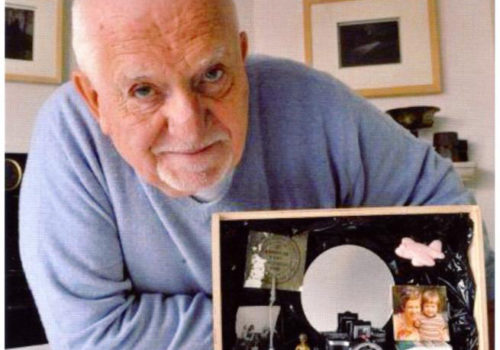Friday the 13th: A lucky day for some, a day of misfortune for others … This Friday, September 13, 2019 is a day of mourning. Roger Kockaerts (also known in the US under the pseudonym Coqart), photographer, galériste, teacher and specialist in restoration-preventive conservation of photographic documents has passed away.
“Farewell Roger, and thank you” by Jacques Kevers
In 1945, an American GI left behind a copy of the magazine “Popular Photography”: it was the beginning of Roger’s passion for photography. This period was undoubtedly also at the base of his love of Jazz. The Jazz will never leave him; photography, he will return soon, after studying electromechanics and an early career at the Université Libre of Bruxelles. In 1957, he joined the Boitsfort Photo Club, where some great names of Belgian photography met, such as Pierre Cordier and Julien Coulommier.
But the competitive spirit of photography clubs was not his cup of tea: he decided to stand on his own.
His taste for nature led him to photograph mineral and vegetable textures; fascinated by the mixture of chance and predetermination that seems to be the basis for surviving, he then embarked on “computer art” and explored the random patterns generated by computer programs. He then combined these forms with silver prints and the symbols offered by the keyboards to create diptychs, semantic-analogical sets that solicit the attention and complicity of the viewer.
His project “Vegetation in Peril” for which he used the historical cyanotype process, in discrete tribute to Anna Atkins and her “Photographs of British Algae …”, is more a cry of anxiety than an encyclopaedic effort, when he sees with what terrible efficiency man endangers a growing number of plant and animal species. The use of a secular process, high cellulose paper, and high conservation materials is not trivial …
For his project “Recycling” he recovered old photographic plates, discarded by their original owners because of their deterioration, to give them a new life by printing them in palladium on high quality paper. He thus diverted these objects from their original usefulness and gave them a new life as an art object. Death and permanence a meditation on the day when the author passed away …
He used his modernized version of Orotone, a technique that was practically forgotten, which he renamed “chromotypie” to produce his series “Maithuna” and “Opium Fields”.
His recent works (“Unknown Soldiers” ..) are more inspired by the photographic intention, and less by the purely aesthetic side.
His works are now in many private collections, museums and institutions around the world.
Since 1980, he was interested in the permanence of photographic emulsions. Considered one of the pioneers in this field, in 1989 he created Permadocument-pH7, a structure specializing in the conservation and restoration of photographic documents. Many institutions, museums and galleries have used his expertise. From 1994 to 2007, he headed the conservation and restoration department at the Royal Academy of Fine Arts in Antwerp. Today, his former students work in many museums around the world …
I met Roger by chance in the early 1990s, visiting an exhibition of artists showing platinum-palladium prints in his gallery “Atelier pH7”. He was a charming, affable, available man who guided the neophyte I was to introduce him to ancient photographic techniques. A visit that I had thought would last thirty minutes, and that lasted for hours … Years later, he was right there when I wanted to create, with the help of some photographers, the Collective “Picto Benelux” devoted to old photographic techniques. Without his discreet but dynamic and effective support, this group would never have been what it has become.
Today an artist, a great connoisseur of photographic technique, but also a generous man, modest, sensitive, a true gentleman and a friend has left us.
Thank you Roger!
Jacques Kevers
















